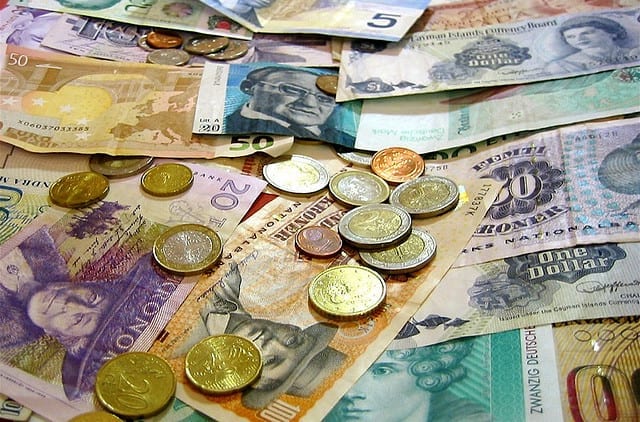
Trade and commerce have been a part of human civilization since the time it came into existence. Early nomadic tribes depended on the barter system to foster cooperation and more importantly ensure survival. A tribe with a deficiency in certain resources could trade for those resources, exchanging what they had in plenty.
This system of exchange, however crude laid the foundation of one the cornerstones of modern society – Money. Over time, trade became more complex. People began to travel further and further interacting with a wider array of cultures and lifestyles. Trade itself extended from the barter of commodities essential for survival, to more novel items such as spices and precious stones. The value of these commodities came not from their ability to satisfy basic human needs, but the desirability created by how rare they were.
When various peoples from different backgrounds began to trade with each other, they found the need to create a common base that they could all use to assign value to extremely varied items. This is where money came in. Of course in the early days, it was not the combination of notes and coins we have become accustomed to. Shells, salt discs, and precious stones have been only some of the objects that have served as currency.
Soon the need for currency to adhere to some sort of standardization became apparent. As civilizations grew, it was imperative that commodities were valued at a rate that did not fluctuate wildly to ensure stable economic growth. This is where the rulers of the time began to establish currency similar to the way we know it today.
In this era, the value of the currency issued came merely from the faith people had in it. The rulers of the time decreed its use across their kingdoms. Coins and paper came into circulation. While metal coins did have some inherent value due to the value assigned to copper, brass and other metals, the currency itself derived its value, merely by the faith the people had in them. The rulers ensured the currency was accepted across their kingdoms and those they traded with.
A drastic change occurred when the English banking system changed all of this. They adopted a system called the Gold Standard. It meant that every note printed, or coin struck was a representation of a certain amount of gold. Gold became the universal standard for measuring the worth of things. Slowly the American banking system followed suit and currency across the western world began to find some sort of common benchmarks. This was the beginning of the modern global economy the way we know it today.
The Gold Standard had numerous benefits but soon, governments saw that with such dependence on their finite bullion reserves, economic growth would stagnate quickly. With their lofty growth ambitions, the gold standard began to look more like a weight holding the economy back than a driver for growth. Finally its demerits outweighed its benefits to the global economic system.
Replacing the Gold Standard was the modern Fiat system of currency. This was one where currency became legal tender backed by the government of a state. Its value came from that assigned to it constitutionally or through the legal system of a state. Modern day physical currency was born of this.
Today we live in a world where the physical notes and coins that were once the foundation of our economic world seem like they are being phased out. Transactions between individuals and organizations are happening through electronic channels eliminating the need for any physical exchange. In an increasingly digital world, our money is moving faster than it ever has making our world a little smaller each day. Still this entire model is based on the principles established by global governments.
In the last five years, an entirely new form of money has threatened this status quo. Rapid development in technology has opened the door for a system called blockchain. It seems to be finding its way into a variety of fields challenging the way systems are built. Its sudden rise to prominence has led to a lot of discussion revolving around it. One if its most high-profile application however is its use in developing a new breed of currency.
Cryptocurrency is a purely digital system built around the completely decentralized structures inherent to blockchain technology. It uses powerful cloud mining servers to power the creation of new currency with its records distributed across nodes all over the world, held online in places like a bitcoin wallet.
Diametrically opposite to the centralized structure seen across monetary structures as we know them, we find ourselves at a crossroad. With governments just beginning to acknowledge their power legislation is beginning to come into play, governing its growth. In less than five years, it has gone from becoming an offbeat investment to a serious contender for the way we transact.
